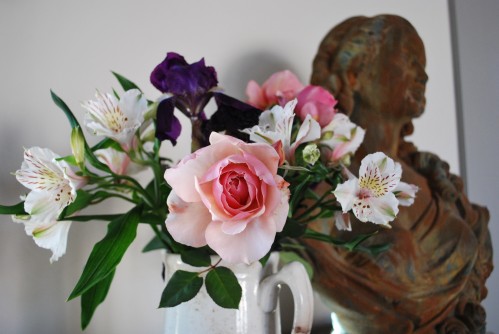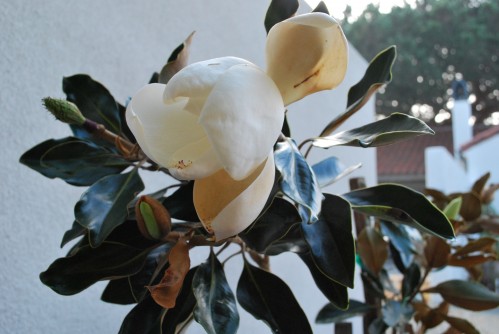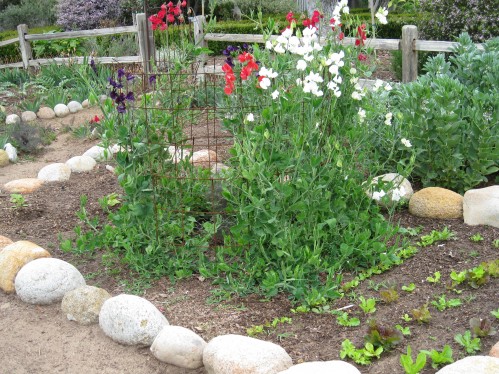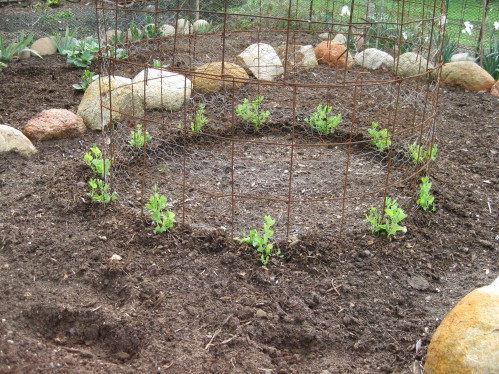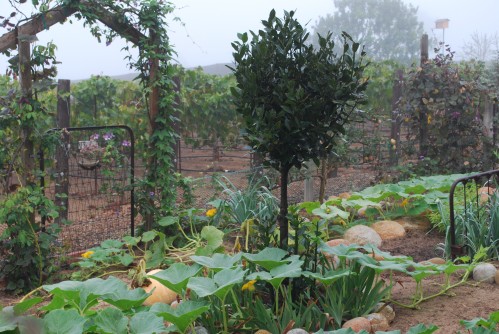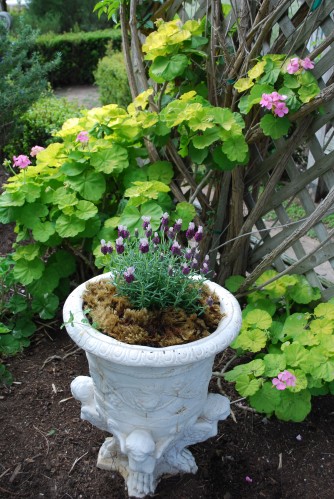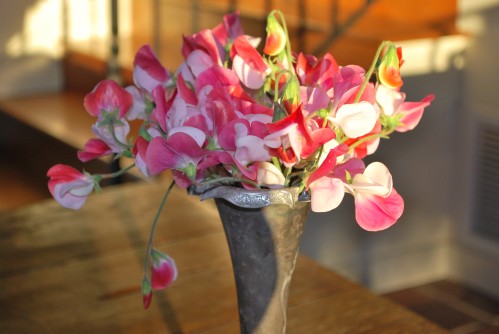 Yesterday, I cut and gathered this wonderful bouquet of sweet peas out of my garden. The first beautiful bouquet of sweet peas for this year. If you plant sweet peas each year, chances are you are going to have early sweet peas, even in February. It has been a few years since I had my hands on the original seed packet, but I think these are the Heirloom Sweet Pea, Painted Lady, from Renee's Garden. Renee loves sweet peas, and has researched and compiled quite an assortment of sweet peas to indulge in.
Yesterday, I cut and gathered this wonderful bouquet of sweet peas out of my garden. The first beautiful bouquet of sweet peas for this year. If you plant sweet peas each year, chances are you are going to have early sweet peas, even in February. It has been a few years since I had my hands on the original seed packet, but I think these are the Heirloom Sweet Pea, Painted Lady, from Renee's Garden. Renee loves sweet peas, and has researched and compiled quite an assortment of sweet peas to indulge in.
Painted Lady sweet peas dates back to 1737. Wow! It is an early bloomer, and tolerates heat well. I love the pink and cream bi-color, and its scent is mesmerizing. I had to bring them in to enjoy. Cutting sweet peas for bouquets encourages more blooms. The more the merrier!
Please share if you grow sweet peas each year. Please share some of your favorite varieties.
VintageGardenGal Tidbit Thyme.... Special Garden Speakers Coming to San Diego soon!
The Village Garden Club of La Jolla is pleased to present Paula Pryke, world renown floral designer from London, will speak and share her fabulous floral creations and latest books. Thursday, April 7, 2011 at 1:30pm. For reservations and more information visit Meet the Masters 2011, Paula Pryke.
Jeffrey Bale, Portland-based world renown landscape architect, speaking on "The Pleasure Garden" on Monday, April 11, 2011, 7pm. For tickets and more information visit, Special Speaker Event, Jeffrey Bale hosted by the San Diego Horticultural Society.

